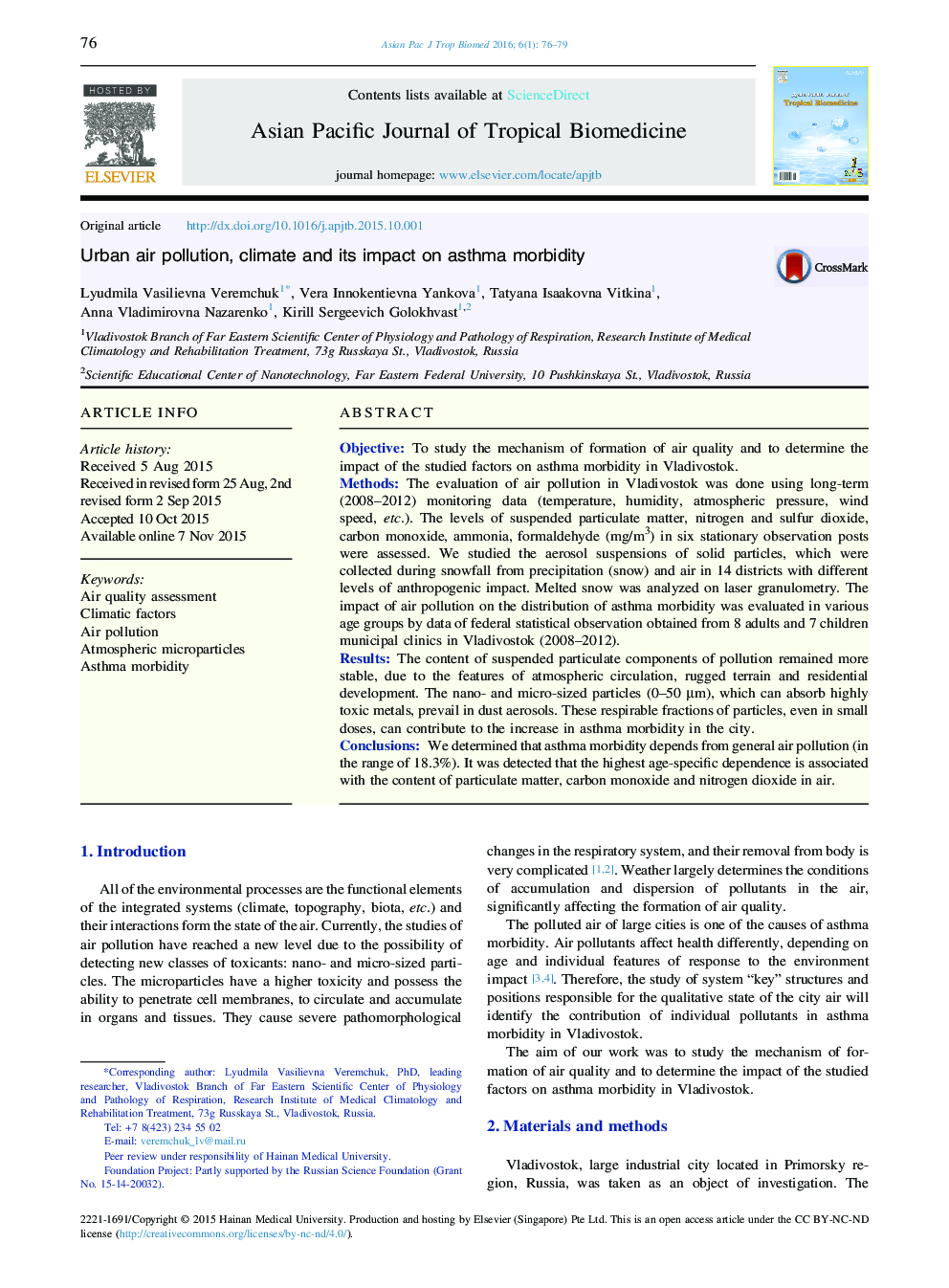| Article ID | Journal | Published Year | Pages | File Type |
|---|---|---|---|---|
| 2032642 | Asian Pacific Journal of Tropical Biomedicine | 2016 | 4 Pages |
ObjectiveTo study the mechanism of formation of air quality and to determine the impact of the studied factors on asthma morbidity in Vladivostok.MethodsThe evaluation of air pollution in Vladivostok was done using long-term (2008–2012) monitoring data (temperature, humidity, atmospheric pressure, wind speed, etc.). The levels of suspended particulate matter, nitrogen and sulfur dioxide, carbon monoxide, ammonia, formaldehyde (mg/m3) in six stationary observation posts were assessed. We studied the aerosol suspensions of solid particles, which were collected during snowfall from precipitation (snow) and air in 14 districts with different levels of anthropogenic impact. Melted snow was analyzed on laser granulometry. The impact of air pollution on the distribution of asthma morbidity was evaluated in various age groups by data of federal statistical observation obtained from 8 adults and 7 children municipal clinics in Vladivostok (2008–2012).ResultsThe content of suspended particulate components of pollution remained more stable, due to the features of atmospheric circulation, rugged terrain and residential development. The nano- and micro-sized particles (0–50 μm), which can absorb highly toxic metals, prevail in dust aerosols. These respirable fractions of particles, even in small doses, can contribute to the increase in asthma morbidity in the city.ConclusionsWe determined that asthma morbidity depends from general air pollution (in the range of 18.3%). It was detected that the highest age-specific dependence is associated with the content of particulate matter, carbon monoxide and nitrogen dioxide in air.
